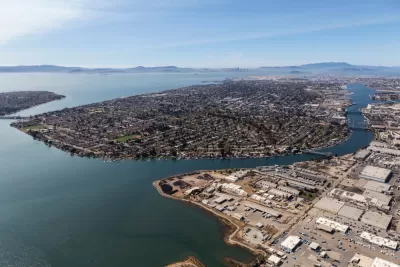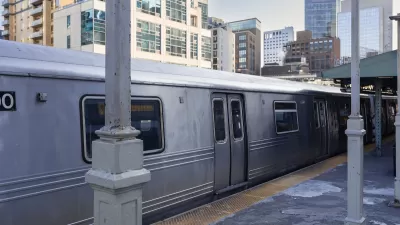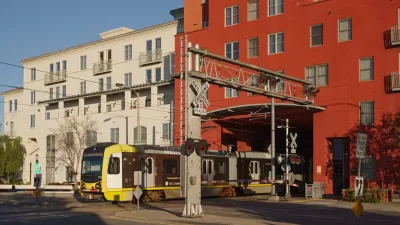The region's transit-oriented development (TOD) plan requires a significant update to achieve the density and housing goals laid out in the MTC's 30-year vision.

In a detailed article, Jonathon Kass, transportation policy manager for SPUR, lays out a case for updating the Bay Area's plan for transit-oriented development (TOD), first developed in 2005.
Kass argues that achieving the vision laid out in the Metropolitan Transportation Commission (MTC)'s Plan Bay Area 2050–a 30-year vision for reaching climate goals, addressing the housing crisis, promoting equity, and improving transportation–requires a focus on transit-oriented communities and a revision of the state's outdated TOD plan, which does not do enough to incentivize effective TOD.
Kass asserts that to overcome local opposition and address community concerns effectively, local jurisdictions will "need incentives to encourage them to plan areas around transit as equitable, sustainable population and job centers. It is MTC’s job to create policies that encourage all communities to advance these regional goals."
According to Kass, the current TOD policy "is not only failing to deliver the transit-oriented communities we need, it is doing harm" with outdated density guidelines and a lack of protections against displacement or incentives for creating jobs or other services in TOD neighborhoods.
Kass provides a list of priorities that the new policy should address. These include: setting density growth targets for existing transit stops, prioritizing commercial development to create jobs and services, mandating community stabilization policies, and eliminating parking requirements.
Read the source article for the full list of suggestions and proposed improvements to the TOD policy.
FULL STORY: The Bay Area Won’t Meet Its Goals Without a New Transit-Oriented Development Policy

Alabama: Trump Terminates Settlements for Black Communities Harmed By Raw Sewage
Trump deemed the landmark civil rights agreement “illegal DEI and environmental justice policy.”

Planetizen Federal Action Tracker
A weekly monitor of how Trump’s orders and actions are impacting planners and planning in America.

The 120 Year Old Tiny Home Villages That Sheltered San Francisco’s Earthquake Refugees
More than a century ago, San Francisco mobilized to house thousands of residents displaced by the 1906 earthquake. Could their strategy offer a model for the present?

In Both Crashes and Crime, Public Transportation is Far Safer than Driving
Contrary to popular assumptions, public transportation has far lower crash and crime rates than automobile travel. For safer communities, improve and encourage transit travel.

Report: Zoning Reforms Should Complement Nashville’s Ambitious Transit Plan
Without reform, restrictive zoning codes will limit the impact of the city’s planned transit expansion and could exclude some of the residents who depend on transit the most.

Judge Orders Release of Frozen IRA, IIJA Funding
The decision is a victory for environmental groups who charged that freezing funds for critical infrastructure and disaster response programs caused “real and irreparable harm” to communities.
Urban Design for Planners 1: Software Tools
This six-course series explores essential urban design concepts using open source software and equips planners with the tools they need to participate fully in the urban design process.
Planning for Universal Design
Learn the tools for implementing Universal Design in planning regulations.
Clanton & Associates, Inc.
Jessamine County Fiscal Court
Institute for Housing and Urban Development Studies (IHS)
City of Grandview
Harvard GSD Executive Education
Toledo-Lucas County Plan Commissions
Salt Lake City
NYU Wagner Graduate School of Public Service





























